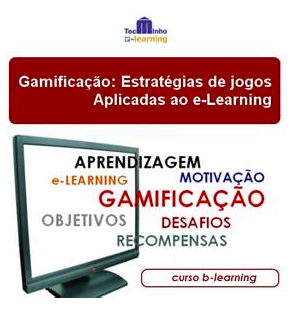Gamification and games are different things. A gamified application is not a game but, sometimes, it may look like a game. Gamified applications' users should feel like players in a game, but they are noy playing a game. They are doing something else, probably some useful task.
Paharia (2013), about the differences between games and gamification, argues that “
gamification is not about creating games at all” and Kapp et al. (2014), refer that “
gamification uses parts of games but is not a game” (p. 69). Also Huang and Soman (2013) point that “
if it is already a game, it is not a form of gamification” (p. 15). Hence, gamification is not a game (Wu, 2011) neither an attempt to simply make an application look like a game (Kumar and Herger, 2013) and also not about building full-fledged games, like serious games (Deterding et al., 2011; Werbach and Hunter, 2012).
Serious games, are not the same as gamification (Schlagenhaufer and Ambert, 2014).
Similarly,
gamification of education is not the same as Digital
Game-Based Learning (DGBL), an approach that uses actual games (serious games, commercial games or games made by students) in a learning environment. It is not also the same as simulations, although all of these terms are related. Kapp et al. (2014) use the notion of Interactive Learning Event (ILE) to describe these different approaches: games, gamification and simulations. In Kapp et al. perspective, gamification is a type of an ILE and different from the other two types.
Therefore, gamification should not be confused with a process of transformation of some non-game activity into a game. Particularly, regarding education, the application of the concept does not mean that the contents of the various subjects are taught in the form of a game.
See also
FAQ #1: What is Gamification?
References:
Paharia, R. (2014).
A new day for gamification, or is it? [Blog post].
Kapp, K., Blair, L., and Mesch, R. (2014).
The Gamification of Learning and Instruction Fieldbook: Ideas into Pratice. Wiley.
Huang, W. and Soman, D. (2013).
A practitioner’s guide to gamification of education. Technical report, Rotman School of Management University of Toronto, Canada.
Wu, M. (2011).
What is gamification, really? [Blog post]
Kumar, J. and Herger, M. (2013).
Gamification at Work: Designing Engaging Business Software. The Interaction Design Foundation., Aarhus, Denmark.
Deterding, S., Dixon, D., Khaled, R., and Nacke, L. (2011).
From game design elements to gamefulness: Defining ”gamification”. In Proceedings of the 15th International Academic MindTrek Conference: Envisioning Future Media Environments, MindTrek ’11, pages 9–15, New York, NY, USA. ACM.
Werbach, K. and Hunter, D. (2012).
For the Win: How Game Thinking Can Revolutionize Your Business. Wharton Digital Press.
Schlagenhaufer, C. and Ambert, M. (2014).
Psychology theories in gamification: A review of information systems literature. In European, Mediterranean and Middle Eastern Conference on Information Systems 2014, Doha, Qatar.





















